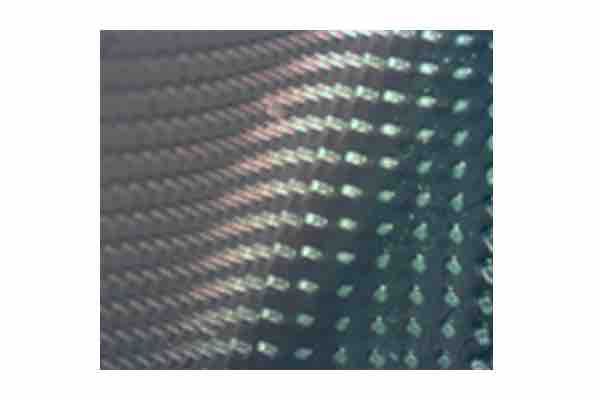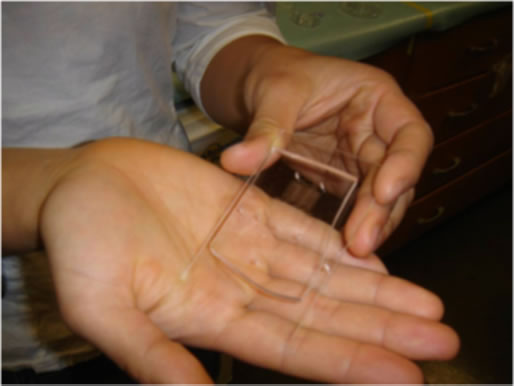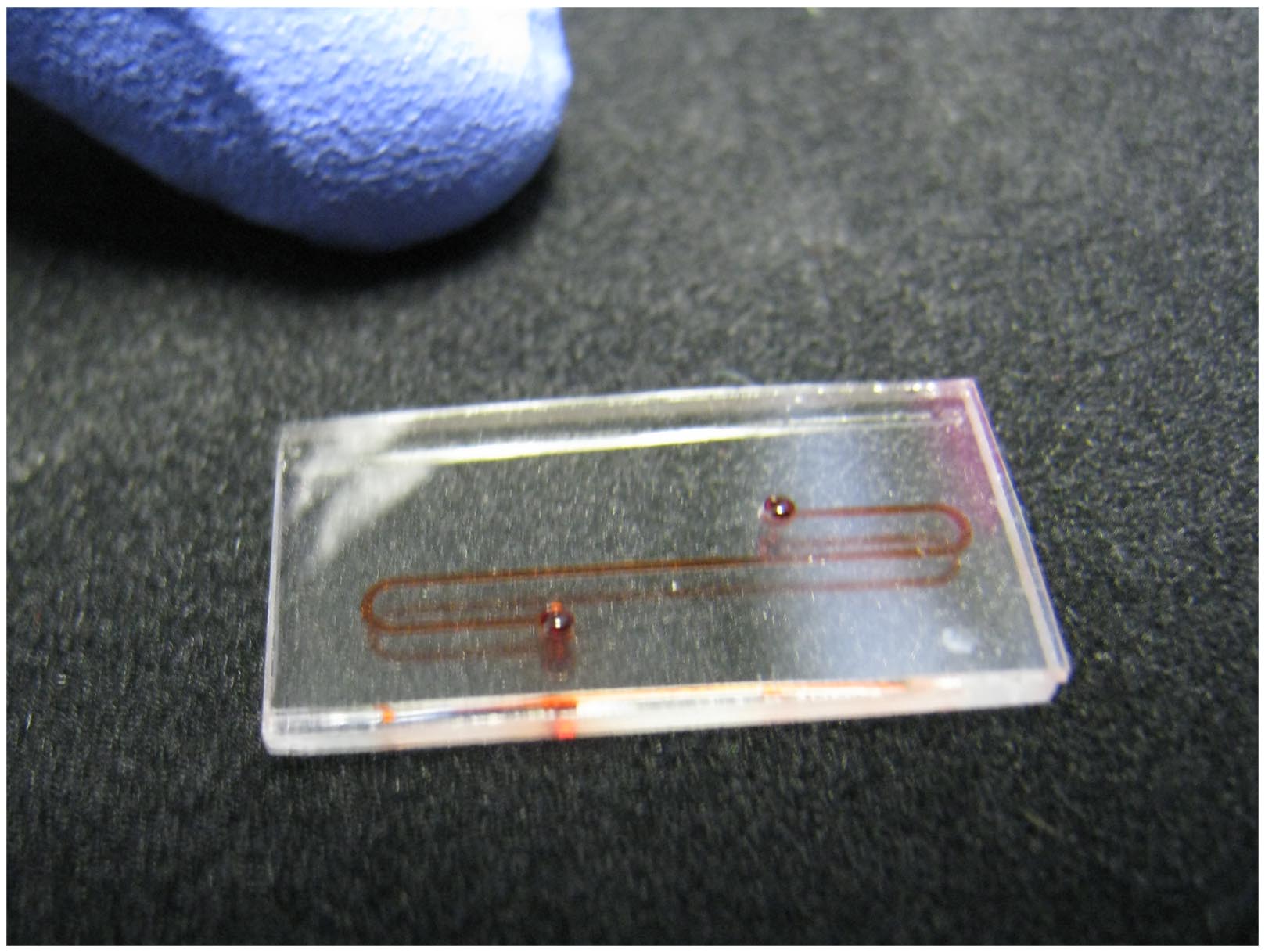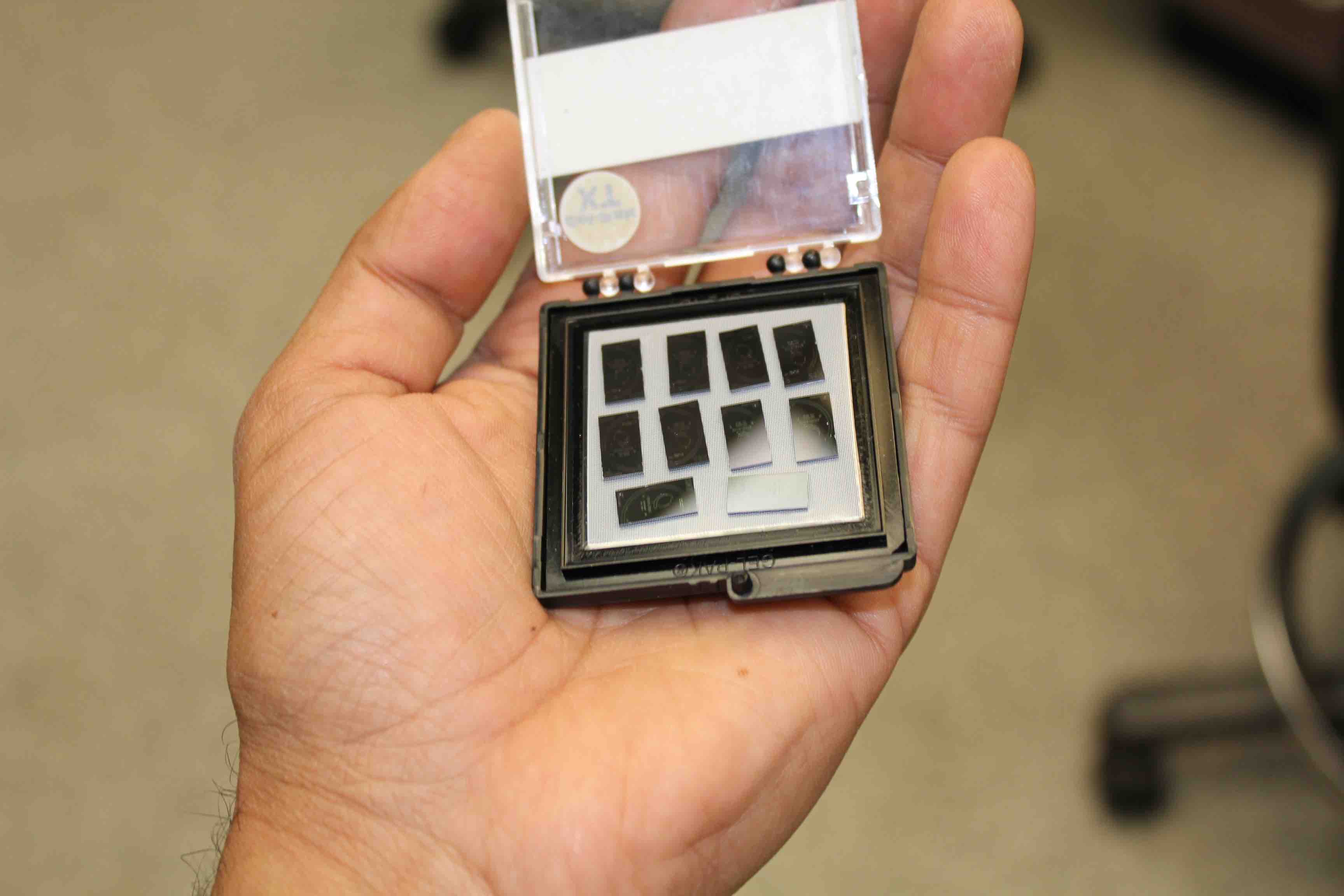Basic Immunology
Developing a fundamental understanding of T cell activation and tolerance.
Thauland TJ, Butte MJ. The actin-capping protein alpha-adducin is required for T-cell costimulation. BioRxiv
Majedi FS, Hasani-Sadrabadi MM, Thauland TJ, Li S, Bouchard L-S, Butte MJ. Augmentation of T-cell activation by oscillatory forces and engineered antigen-presenting cells. BioRxiv
- Mechanobiology
Our lab has discovered that T cells, the major coordinators of the immune response, respond to mechanical forces that they receive from interactions with other cells and that they themselves make. Mechanotransduction -- the conversion of mechanical forces to biochemical signals -- has barely been studied in immune cells. It is our long-term goal to understand the biophysical basis of mechanotransduction in modulating T cell responses, which can strategically improve T cell functions in autoimmunity, infections, and cancer.
- How do mechanical signals modulate activation of T cells?
- What are the cytoskeletal pathways that facilitate mechanotransduction in T cells?
- What is the impact of extracellular matrix structure on T cell activation?
- Mechanical forces at the Molecular Scale
- We showed that T cells make pushing and pulling forces after TCR triggering. We show that the actin-spectrin anchoring protein alpha-adducin is necessary to trigger CD28 costimulation. We demonstrated the oscillatory forces on the T cell receptor can accentuate activation in vitro.
Hu KH and Butte MJ. T cell activation requires force generation. Journal of Cell Biology. 2016 Jun 6;213(5):535-42. PMID: 27241914.
- Mechanical forces at the Cellular Scale
- We showed that the ability of T cells to sever actin by the enzyme cofilin controls the immune synapse size and the strength of signal received by T cells. These results improve our understanding of the threshold of activation of T cells.
Thauland TJ, Hu KH, Bruce MA, Butte MJ. Cytoskeletal Adaptivity Regulates T Cell Receptor Signaling. Science Signaling. 2017 Mar 7;10(469). PMID: 28270556.
- Mechanical forces at the Tissue Scale
- We showed T cells sense mechanical forces coming from the surrounding extracellular matrix, in lymph nodes or in biomimetic scaffolds.
Meng KP, Majedi FS, Thauland TJ, Butte MJ. Tissue Mechanics Controls T-cell Activation and Metabolism. BioRxiv
Majedi FS, Hasani-Sadrabadi MM, Thauland TJ, Li S, Bouchard L-S, Butte MJ. T-cell activation is modulated by the 3D mechanical microenvironment. BioRxiv
Coccidioidomycosis
Understanding failures of the immune response to coccidioidomycosis.
We discovered that the immune system is skewed to Type-2 immunity during severe coccididoidomycosis.
- Tsai M, Thauland TJ, Huang AY, Bun C, Fitzwater S, Krogstad P, Douine ED, Nelson SF, Lee H, Garcia-Lloret MI, Butte MJ. Disseminated coccidioidomycosis treated with interferon-γ and dupilumab. New England Journal of Medicine. 2020 Jun 11;382(24):2337-43.
- Krogstad P, Johnson R, Garcia-Lloret MI, Heidari A, Butte MJ. Host–pathogen interactions in coccidioidomycosis: prognostic clues and opportunities for novel therapies. Clinical Therapeutics. 2019 Oct 1;41(10):1939-54.
Atomic Force Microscopy
Biology at the nanoscale
We have pioneered the use of AFM in studying immune cells.
- Delivering molecular signals to single, live cells, with controlled force
- Hu KK, Bruce MA, Butte MJ. Spatiotemporally and mechanically controlled triggering of mast cells using atomic force microscopy. Immunol Res. 58(2-3):211-7 (May 2014). PMID: 24777418.
- Measuring beating cardiomyocytes
- Ge X, Wang IE, Toma I, Sebastiano V, Liu J, Butte MJ, Reijo Pera R, Yang PC. Human amniotic mesenchymal stem cell-derived induced pluripotent stem cells may generate a universal source of cardiac cells. Stem Cells and Development. 2012 Oct 10;21(15):2798-808. doi: 10.1089/scd.2011.0435. Epub 2012 Jun 11. PMID 22530853.
- Sun N, Yazawa M, Navarrete EG, Sanchez-Freire V, Hu S, Wang L, Han L, Lee A, Abilez OJ, Pavlovic A, Liu J, Hajjar RJ, Dolmetsch RE, Butte MJ, Ashley EA, Longaker MT, Robbins RC, Wu JC. Patient-Specific Induced Pluripotent Stem Cell as A Model for Familial Dilated Cardiomyopathy. Science Translational Medicine, 2012 Apr 18;4(130):130ra47. PMID 22517884.
- Liu J, Sun N, Bruce MA, Wu JC, Butte MJ. Atomic Force Mechanobiology of Pluripotent Stem Cell-Derived Cardiomyocytes. PLoS ONE, 7(5):e37559. Epub 2012 May 18. PMID 22624048.
- Wang IN, Wang X, Ge X, Anderson J, Ho M, Ashley E, Liu J, Butte MJ, Yazawa M, Dolmetsch RE, Quertermous T, Yang PC Apelin enhances directed cardiac differentiation of mouse and human embryonic stem cells. PLoS ONE, 2012; 7(6): e38328. Epub 2012 Jun 1. PMID 22675543.
- Measuring the elastic modulus and viscoelasticity of biomimetic hydrogels
- Serpooshan V, Zhao M, Metzler S, Weo K, Shah, PB, Wang, A, Mahmoudi M, Malkovskiy AV, Rajadas J, Butte MJ, Bernstein D, Ruiz-Lozano, P (2014). Use of bio-mimmetic 3D technology in therapeutics for heart disease. Bioengineered, 5(3), 0-1 (2014). PMID: 24637710.
- Serpooshan V, Wei K, Zhao M, Metzler SA, Shah PB, Wang A, Mahmoudi M, Butte MJ, Bernstein D, Ruiz-Lozano P. Bioengineered Acellular Collagen Patch Attenuates Cardiac Remodeling and Improves Ventricular Function post Myocardial Infarction. Biomaterials. 34.36: 9048-9055 (2013). PMID: 23992980.
- Wei K*, Serpooshan V*, Metzler SE, Zhao M, Shah PB, Kim PJ, Savtchenko A, Wang A, Diez-Cunado M, Cai W, Wei K, Spiering S, Zhu W, Butte MJ, Yang P, Bernstein D, Mercola M, Ruiz-Lozano P. Engineered Epicardium Activates Cardiac Regeneration. In press, Nature (2015).
- Improving our understanding of exosomes and microvesicular particles
- Kanada M, Bachmann MH, Hardy JW, Bronsart L, Wang A, Frimannson DO, Sylvester MD, Schmidt TL, Kaspar RL, Butte MJ, Matin AC, Contag CH. Differential fates of biomolecules delivered to target cells via extracellular vesicles. PNAS. 112.12 (2015): E1433-E1442.
- Development of advanced AFM technologies for rapidly measuring cells
- Vijayraghavan K, Wang A, Solgaard O, Butte MJ, Melosh NA. Measurement of Elastic Properties in Fluid Using High Bandwidth AFM Probes. Applied Physics Letters, 102, 103111 (2013).
- Vijayraghavan K, Gellineau AA, Wang A, Butte MJ, Melosh NA, Solgaard O. Modeling, design, and fabrication of a high bandwidth AFM probe for imaging in air and water. J. Micromechanical Systems. 22(3):603-612. Jun 2013.
- Wang A, Vijayraghavan K, Solgaard O, Butte MJ. Fast Stiffness Mapping of Cells Using High-Bandwidth Atomic Force Microscopy. Submitted.
Genetic Immune Diseases
Dr. Butte's clinic focuses on children and adults with severe infections, autoimmunity, and inflammation due to monogenic causes. We are working very hard to improve diagnosis of rare immune diseases (primary immunodeficiency diseases). By elucidating the underlying cause of rare immune diseases, we learn more about the human immune system. Furthermore, we improve our ability to apply rational treatments.
- PI3K
Thauland TJ, Pellerin L, Ohgami RS, Bacchetta R, Butte MJ. Mechanism for increased follicular helper T cell development in activated PI3K delta syndrome. Frontiers in Immunology. 2019 Apr 12;10:753. PMID 31031754. PMCID
- SCID and Omenn Syndrome
Matthews AGW, Briggs CE, Yamanaka K, Small TN, Mooster JL, Bonilla FA, Oettinger MA, Butte MJ. Compound Heterozygous Mutation of Rag1 leading to Omenn Syndrome. PLoS ONE. 10(4): e0121489 (2015). PMID: 25849362. PMCID.
- Collaborative studies on a variety of immune deficiencies
Mathieu A-L, … Butte MJ, … Belot A. PRKDC mutations associated with immunodeficiency, granuloma, and autoimmune regulator–dependent autoimmunity. J. Allergy and Clinical Immunology. 2015 Jun;135(6):1578-1588.e5. doi: 10.1016/j.jaci.2015.01.040. Epub 2015 Apr 2. PMID: 25842288
As a member of the Undiagnosed Diseases Network
Food Allergy
Improving the diagnosis of food allergies
Diagnosis of food allergies currently does not provide information about the persistence or severity of food allergies. We are developing techniques to facilitate these measurements by advancing skin prick testing.
- Sun W, Araci Z, Inayathullah M, Manickam S, Zhang X, Bruce MA, Marinkovich MP, Lane AT, Milla C, Rajadas J, Butte MJ. Polyvinylpyrrolidone microneedles enable delivery of intact proteins for diagnostic and therapeutic applications. Acta Biomaterialia, 9 (8), 7767-7774 (2013). PMID: 23648574.
 We present a method of fabricating microneedles from polyvinylpyrrolidone (PVP) that enables delivery of intact proteins (or peptides) to the dermal layers of the skin. PVP is known to self-assemble into branched hollow fibers in aqueous and alcoholic solutions; we utilized this property to develop dissolvable patches of microneedles. Proteins were dissolved in concentrated PVP solution in both alcohol and water, poured into PDMS templates shaped as microneedles, and upon evaporation of solvent, formed into concentric, fibrous, layered structures. This approach of making PVP microneedles overcomes problems in dosage, uniform delivery, and stability of protein formulation as compared to protein-coated metallic microneedles or photo-polymerized PVP microneedles. Here we characterize the PVP microneedles and measured the delivery of proteins into skin. We show that our method of fabrication preserves the protein conformation. These microneedles can serve as a broadly useful platform for delivering protein antigens and therapeutic proteins to the skin, for example for allergen skin testing or immunotherapy.
We present a method of fabricating microneedles from polyvinylpyrrolidone (PVP) that enables delivery of intact proteins (or peptides) to the dermal layers of the skin. PVP is known to self-assemble into branched hollow fibers in aqueous and alcoholic solutions; we utilized this property to develop dissolvable patches of microneedles. Proteins were dissolved in concentrated PVP solution in both alcohol and water, poured into PDMS templates shaped as microneedles, and upon evaporation of solvent, formed into concentric, fibrous, layered structures. This approach of making PVP microneedles overcomes problems in dosage, uniform delivery, and stability of protein formulation as compared to protein-coated metallic microneedles or photo-polymerized PVP microneedles. Here we characterize the PVP microneedles and measured the delivery of proteins into skin. We show that our method of fabrication preserves the protein conformation. These microneedles can serve as a broadly useful platform for delivering protein antigens and therapeutic proteins to the skin, for example for allergen skin testing or immunotherapy.
Immune Diagnostics (2009-2015, now inactive)
Low cost counting of cells
We have an ongoing project using microfluidics tools for immunological diagnostics.
- Newborn Screening: We are developing tools to identify newborns with serious, life-threatening immunodeficiencies (such as SCID).
- SCID can be identified by low numbers of T cells in the peripheral blood
- Maternal T cells in the fetal/newborn circulation can confound this count
- Complete blood counting: Our tools will facilitate semi-quantitative counting of blood cells from a drop of blood.
- Disaster settings
- Military applications
- Resource-poor (rural) settings
- Home monitoring
- Daniel Garcia; Isaac Ghansah; John LeBlanc; Manish J. Butte. Counting cells with a low-cost integrated microfluidics-waveguide sensor. Biomicrofluidics. March 7, 2012.
- LeBlanc J; Muller A; Prinz A; Butte MJ. Optical Planar Waveguide for Cell Counting. Applied Physics Letters. Jan 23, 2012.
| First generation sensor 2010 |  |
| Second generation sensor 2012 |  |
| Third generation sensor 2013 |  |
| Fourth generation sensor 2015 |  |